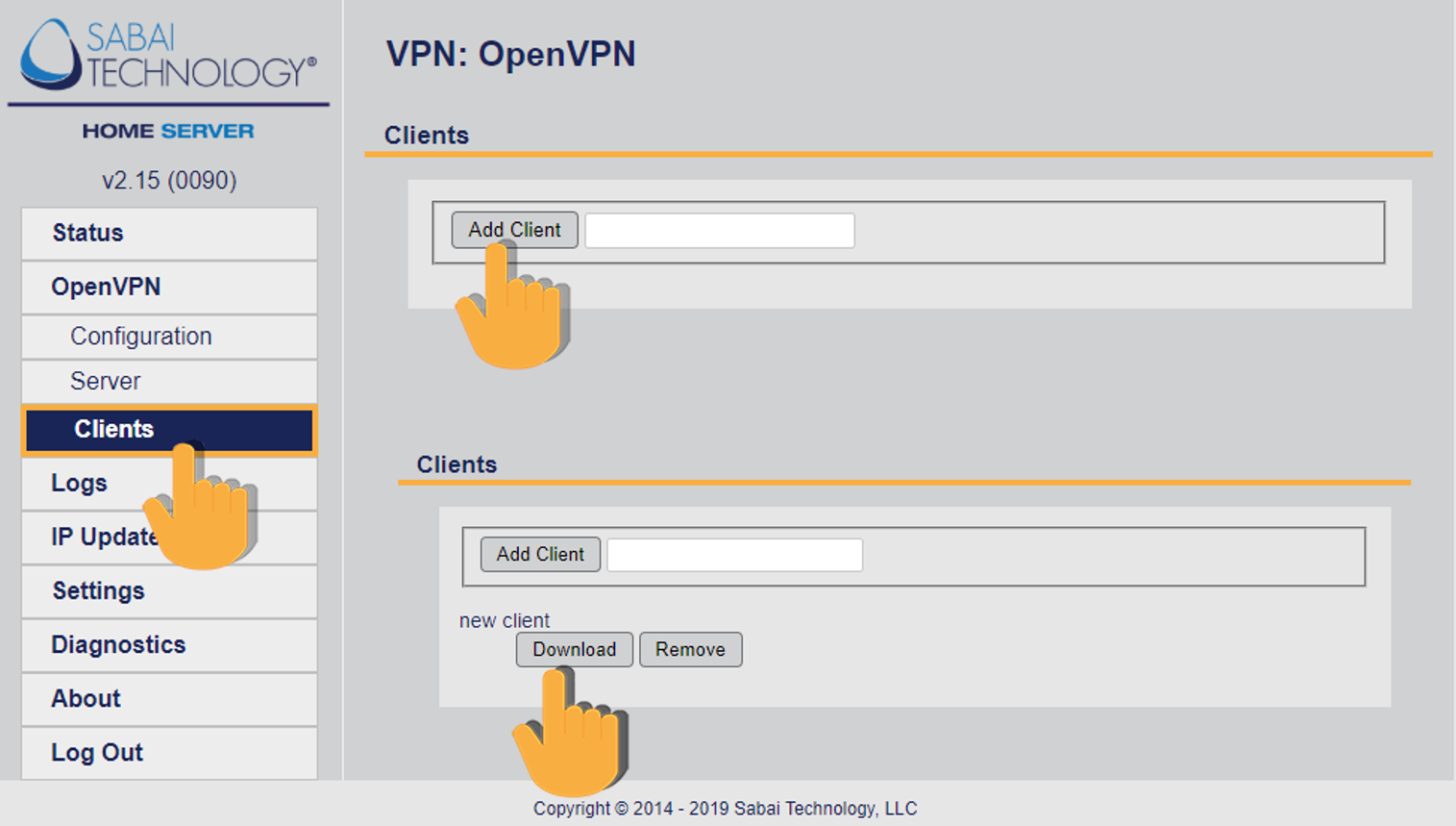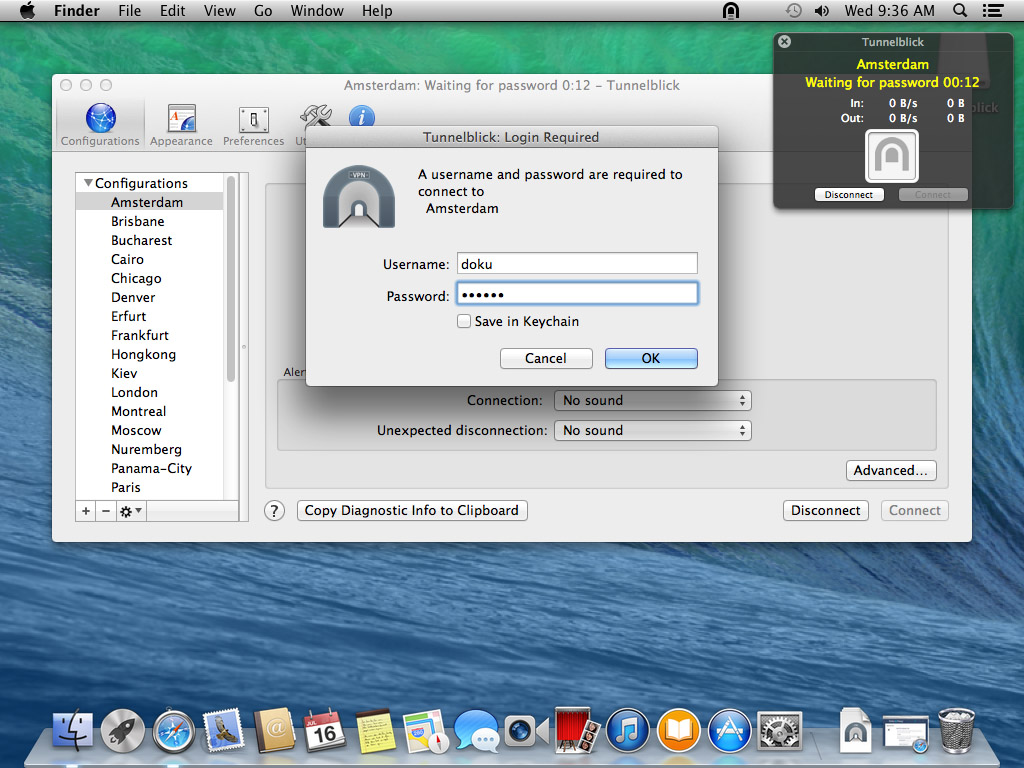Download Tunnelblick Client For Mac
MCECS provides OpenVPN as the prefered VPN solution for accessing protected MCECS resources (such as printers, and computers that support Remote Desktop or VNC. Once you are connected, your network traffic will be directed through PSU’s networks and it will appear that you are connected physically to PSU’s network.
CECS vs CECS Full Tunnel
Alternative: OpenVPN open source Tunnelblick program. The open source project has a client for the macOS operating system as well. It is called Tunnelblick and it is less limited in functionality than the OpenVPN Connect Client because it does support the option to connect to multiple OpenVPN. Tunnelblick on macOS Catalina - Tunnelblick Free open source OpenVPN VPN client server software GUI for Mac OS X. Includes OpenVPN, OpenSSL, easy-rsa, and drivers.
Tunnelblick is a user-friendly and unobtrusive macOS application that enables you to take control over the OpenVPN client and server connections from within a simple and clean interface. Complete package to connect to a VPN server from your Mac. The Tunnelblick utility comes with all the necessary.
We offer two configuration options for OpenVPN.
- The Full Tunnel will send all of your network communication from your computer through MCECS networks. For example, if you browse to a website on the Internet, your connection will appear to originate from MCECS.
- CECS or “Split Tunnel” configuration only sends traffic destined for MCECS resources through the VPN connection. Any traffic bound for other sites will travel through your regular Internet Service Provider (ISP).
The Full Tunnel is sometimes necessary if you are attempting to access PSU provided resources that are hosted outside of the University (such as periodical services licensed by the Library) but still require sanctioned connections to be coming from PSU’s own networks.
Tunnelblick 3.8
Step 1 – Download and install the TunnelBlick client software.

Download location: https://tunnelblick.net/
We recommend downloading the latest stable release for your Mac. Follow the installation directions.
Step 2 – Download and install our TunnelBlick configuration files.
Download location: https://intranet.cecs.pdx.edu/downloads/files/openvpn/current/cecs_mac_openvpn.zip
Download the zip file and extract it in a folder. The TunnelBlick configuration files have an extension of .tblk.
To run TunnelBlick to provide OpenVPN access in Split Tunnel mode, double-click on CECS.tblk.
To run TunnelBlick to provide OpenVPN access in Full Tunnel mode, double-click on CECS_Full_Tunnel.tblk.

Your configuration should like this:
Tunnelblick Vpn
If you are having trouble connecting, try these things.
Tunnelblick For Pc
- Double check that Tunnelblick is installed and runs. You should see a tunnel-shaped icon in the upper right corner of the screen next to the spotlight magnifying glass when the program is running.
- Make sure Tunnelblick is completely closed (by left clicking the icon and selecting “Quit Tunnelblick”) before double-clicking the .tblk file.
- If you cannot load webpages after successfully connecting to the VPN, make sure “route all IPv4 traffic through the VPN” is checked in the settings.
Download Tunnelblick Client For Mac Os
Highlighted Articles Discussion Group | The following is the current status of issues that have been seen using the latest stable version of Tunnelblick on the latest version of macOS Catalina. AllToMP3 is available on Ubuntu, Debian, elementary OS and Linux Mint.For Ubuntu. All2mp3 virus. Important: See The Future of Tun and Tap VPNs on macOS for information about changes to future versions of macOS. NEW macOS REQUIREMENT: Restarting the computer is required by macOS Catalina before connecting some configurations for the first time. If a configuration requires a 'tun' or 'tap' system extension, the first time Tunnelblick asks macOS to load the appropriate system extension, macOS will tell the user that they must give permission to load system extensions signed by 'Jonathan Bullard' in System Preferences : Security & Privacy : General. If the user gives such permission by clicking 'Allow', macOS must restart the computer before the permission will be honored. After the permission has been given and the computer has been restarted, you may then connect all VPN configurations normally. This only needs to be done one time. Once permission to load system extensions signed by 'Jonathan Bullard' has been granted and the computer has been restarted, no further action is needed. Tunnelblick will be able to load 'tun' and 'tap' system extensions for any configuration without user interaction, and that ability will persist after computer restarts, 'safe boots', and updates to Tunnelblick. Note: If you are using a 'tun' VPN, you can avoid needing to load the 'tun' system extension. See the note at the start of Errors Loading Kexts (Device Drivers). WON'T FIX: Sidecar does not work when a VPN is connected using Tunnelblick's default for a configuration. Sidecar does not work if IPv6 is disabled. By default, Tunnelblick disables IPv6 while a VPN is connected. This is done to prevent information leaks in common VPN setups (see A Glance through the VPN Looking Glass: IPv6 Leakage and DNS Hijacking in Commercial VPN clients). To fix this problem:
(This page was updated 2020-07-12.) |